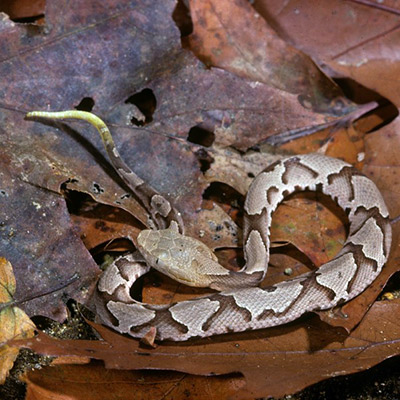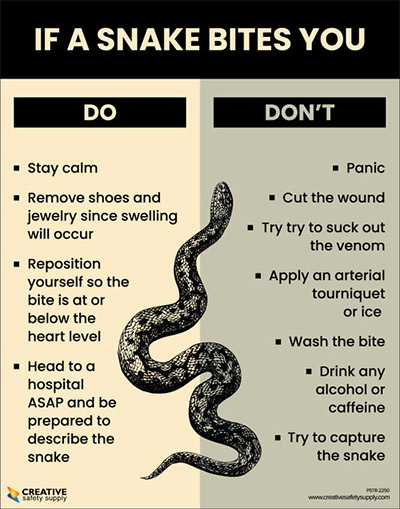Why, How and What to Do to Stay Snake-bite Safe
By Kristin Love
As summer starts to wane, more hikers will be hitting the trails surrounding North Georgia and with them, bring the opportunity for more human-snake encounters. But don’t panic just yet! This handy guide is going to outline the why, how, and what-to-do’s you need to stay snake-bite safe this fall season.
The Why
While summer is the time for people to cool off in the pool or by the beach, this season allows for a massive amount of hunting and breeding among snake populations. This means that female snakes will begin laying their clutches of eggs in the early fall, sending young, inexperienced snakes out into the world alone to discover how to hunt and protect themselves solo. In fact, many of Georgia’s nonvenomous snake juveniles will mimic behaviors of venomous species, like shaking their tails like a Rattlesnake, to ward off predators like owls and hawks.
A Fleeing Snake
These juveniles often want absolutely nothing to do with people and will react to these interactions with the idea of fleeing. Our advice? Let them. Don’t corner a snake from its exit point, and simply let it go on its natural way on the trails.

Outdoor Dens
Snakes of all ages will work hard to find den spaces that meet all their needs for space, food, shelter and water. These are often underneath large rocks/boulders and beneath fallen trees. This can mean for an unfortunate collision between hikers stepping over these obstacles and the reptiles hiding underneath.
Want our opinion? Carry a walking stick or trekking pole. Before stepping over these ideal nesting areas, tap the opposite side with your stick or pole to make sure no slithery friend is going to see your ankle as a threat. Avoid picking up rocks and large logs, as you are likely to find a snake not looking for houseguests to visit. Close-toed shoes are also recommended for additional safety.
Venomous vs. Nonvenomous
While the numbers of snake interactions are increasing, that does not necessarily mean a grave outcome. Of the 46 species of snakes that call Georgia home, only six of those are venomous, and only three of them are likely to be found in the North Georgia region. Those include the Copperhead, Timber Rattlesnake and Pygmy Rattlesnake. However, you are far more likely to stumble upon a Copperhead, one of the least venomous and least aggressive snakes found in our ecosystem.
While these snakes will defend themselves if threatened, they regularly retreat from human contact. In fact, in the entire U.S., over 7,500 people are bitten by venomous snakes each year, with only five cases ending in fatality. That is only half of the amount of people who die from lightning strikes each year! The advancement of modern medicine and relative closeness of medical centers throughout Georgia provide reliable care for those unlucky enough to make venom-insertion contact with these native reptiles.
If you do encounter a snake, remember that it is illegal to harm or kill a nonvenomous snake in the state of Georgia.
If you or a friend experience a snake bite, we suggest following this handy guide to establish your next steps.

https://www.georgiapoisoncenter.org/poisons/alerts-recent-trends/snakebites/
